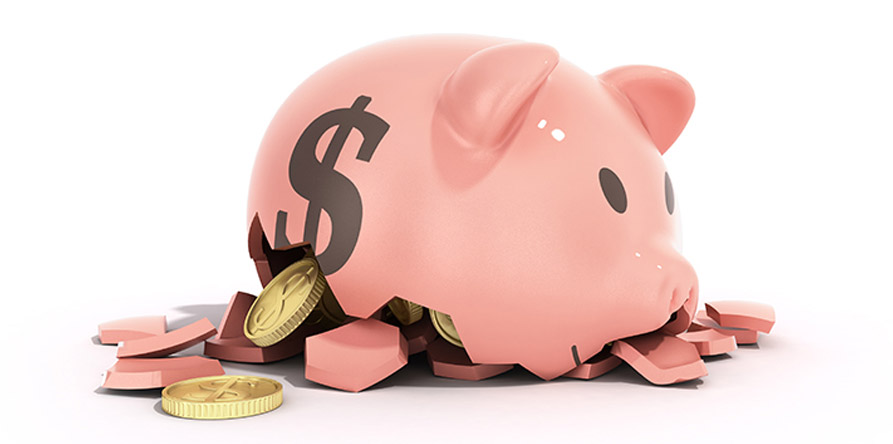Fidelity’s retirement calculator can help you look at the bigger picture when it comes to retirement planning and give you an idea of how much you need to retire comfortably.

How much do Canadians need to save per year for retirement?
It’s hard enough for people to wrap their heads around saving and investing for retirement in normal economic times, so it’s no surprise how overwhelmed so many feel about their financial futures today. With inflation increasing the costs of everyday items and rising interest rates affecting mortgage and other borrowing costs, budgets have gotten out of whack, while portfolios have been subjected to ongoing market volatility.
While it’s natural to feel some anxiety in tougher economic times, it’s critical to remember that saving for retirement is a multi-year journey that’s unique to your own circumstances, so don’t be too hard on yourself if you’re unsure of what to save. Fortunately, there are some rules of thumb you can follow, whether you’re retired or still working towards that goal.
How much do you need to save?
There used to be an idea that you had to save $1 million to live a comfortable retirement. As the financial planning world has evolved and become more nuanced, striving for some universal savings number could become a counterproductive goal – some people need more, while others can live quite comfortably on less.
Rather than target a dollar figure, think about your retirement needs in terms of your current lifestyle. As a starting point, you will need 70% of your income during your working life to maintain approximately the same standard of living in retirement, although this assumes you no longer have to support children, service a mortgage, pay for transportation to work or save for retirement itself. Of course, your reality will affect that figure. In individual cases, it could also be higher or lower depending on your family status, tax bracket, real estate ownership, lifestyle and health.
The trouble is that 70% must be adjusted to account for inflation between now and the time you retire – and, indeed, onward for the rest of your life, and perhaps that of a surviving spouse. Calculating the size of nest egg needed to meet that cost can get complicated. There are many variables, including average rates of inflation and investment returns in the future. It requires making assumptions that may in time prove to be false.
While the 70% may still be a worthwhile number to keep in mind, it’s also a good idea to consider focusing your savings around every stage of your working life.
Saving through the ages
20s: Build a budget and pay down debt
Those in their 20s are just starting out on their financial journey. Now’s the time to focus on eliminating student loans and consumer debt and to get into the habit of creating a budget that sets aside some of your income for future purposes, whether for retirement, a down payment on a home or something else. The next decade can get expensive, so the less money you owe, the better off you’ll be.
30s: Start your savings
Many 30-somethings will have family, first homes and new jobs on their minds, but now’s also the time to start thinking about saving for the future. Aspire to have a year’s worth of employment income set aside as emergency savings, or as part of your investments, by age 30, and two year’s worth of employment by 35. No matter what, though, you have enough time for your investments to grow before you retire that even saving $250 a month can put you ahead of the game.
40s: Bringing retirement into focus
In your 40s, you’re now well into your career and will have become accustomed to a certain standard of living. This will help bring your future retirement needs into focus. Ideally you should aspire to have three times your (now probably more substantial) employment income saved by age 40, and four times by 45, to meet your retirement goals.
50s: Catch up on your savings goals.
Your 50s are your peak earning years, and expenses for children and housing may now start to drop. This is your opportunity to play catch-up on your savings goals if you’ve fallen behind. Aim to accumulate six times your annual employment income by age 50, and seven times by age 55. As your nest egg will grow faster on its own because of compounding investment returns, reaching those goals may not be as hard as you think.
60s: Entering the home stretch
You’re now in the home stretch. You may be planning your retirement date, or may have already retired or semi-retired. Before you do, you should have nine times your working income by 60, and ten times by 65. But your individual savings requirement and optimal retirement date will depend in large part on your lifestyle once your working days are done. If you plan on travelling and eating out more than when your nose was to the grindstone, for instance, you’ll need to save more.
Don’t just save – invest.
In addition to saving an appropriate amount month to month, funding your retirement necessitates investing your savings wisely, too. Importantly, your investment returns need to exceed the rate of inflation for you to build wealth over time. Everyone will have their own risk tolerance and specific needs that might affect how their portfolio is allocated, but there are some basic truisms of building net worth that apply to all:
- Start early. The magic of compounding means $1,000 that has 40 years to grow will likely be worth twice as much as if it only had 30 to do so.
- Stay invested. A portfolio invested in stocks and bonds has in the past, handily outpaced inflation over long periods, if the investor stays fully invested and catches all the best days in the markets.
- Don’t get discouraged! Even if you’ve missed your targets, or an untimely market swoon derails your plans, it’s never too early or too late to save for retirement, and there are no savings too small or too large.
How do you compare?
| Median Canadian savings by age | Under 35 years | 35 to 44 years | 45 to 54 years | 55 to 64 years | 65 years and older |
| Private pension assets | $35,000 | $100,000 | $210,000 | $361,600 | $267,500 |
| Registered Retirement Savings Plans (RRSPs)* | $15,000 | $33,000 | $72,600 | $120,000 | $102,200 |
| Employer-sponsored registered pension plans | $29,700 | $94,800 | $216,800 | $335,500 | $231,300 |
| Financial assets, non-pension | $15,700 | $21,000 | $25,200 | $30,800 | $50,000 |
| Net worth | $159,100 | $409,300 | $675,800 | $873,400 | $738,900 |
* Includes Registered Retirement Income Funds (RRIFs), Locked-in Retirement Accounts (LIRAs) and other plans. source: https://www150.statcan.gc.ca/t1/tbl1/en/cv.action?pid=1110001601
Most Canadians are behind when it comes to meeting the targets outlined above. The average Canadian household saved about 3.74% of its disposable income per year in 2023, according to Statistics Canada. Given that the average disposable income in 2023 was $95,741, that would put the average family's savings at roughly $3,570.
As of 2023, the median family where the head of the household is aged between 55 and 64 had $335,00 saved in employer-sponsored pension plans and $120,000 in their RRSPs. However, that figure includes workplace pensions, but not financial assets not earmarked for retirement (TFSAs and unregistered accounts, for example) and other contributors to net worth such as home equity.
The statistics also show a marked disparity between single people and members of a family, with average family savings very much higher at all age levels. The median family net worth tops out around $873,400 when the heads of household are between 55 and 64. Still, someone aged 65 in Canada can expect to live another 21 or so years (22.1 for women and 19.3 for men), meaning that amount has to last a long time.
The bottom line
The earlier you start to save for retirement, the better. But don’t be discouraged by being late to the saving party. If you have a plan and stick to it, you’ll be surprised what you can achieve.
Don’t do it alone, either. A financial advisor can help you create a plan to meet your retirement goals.



